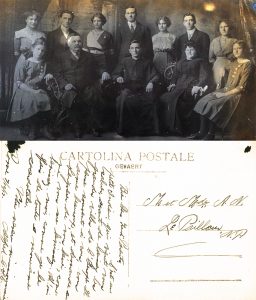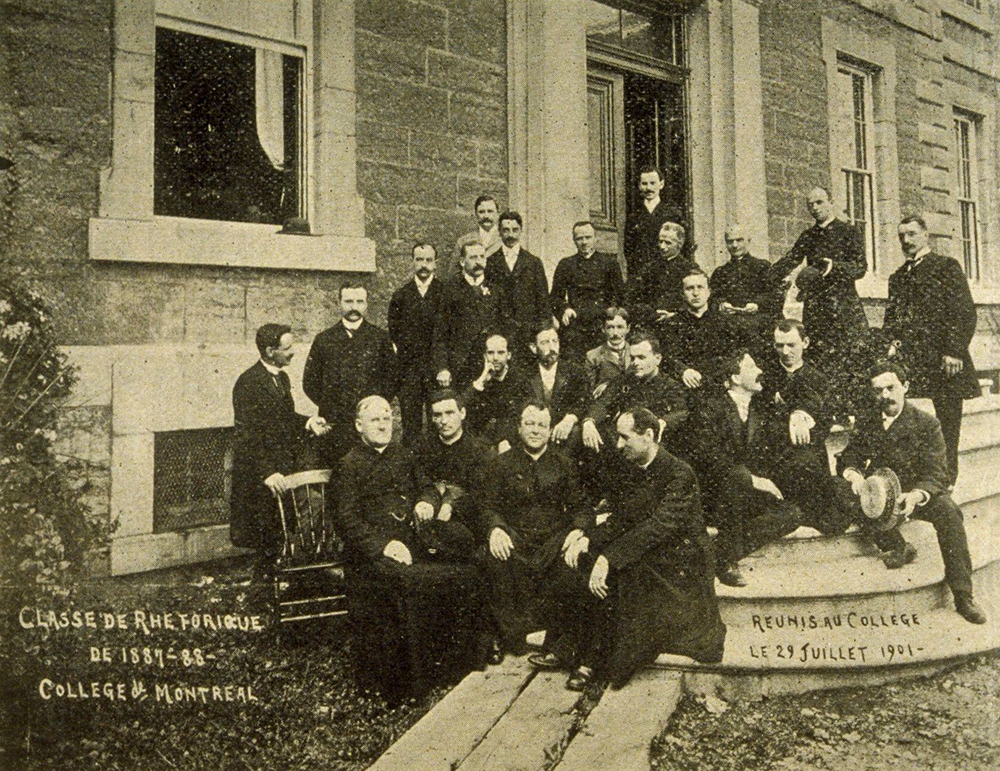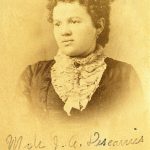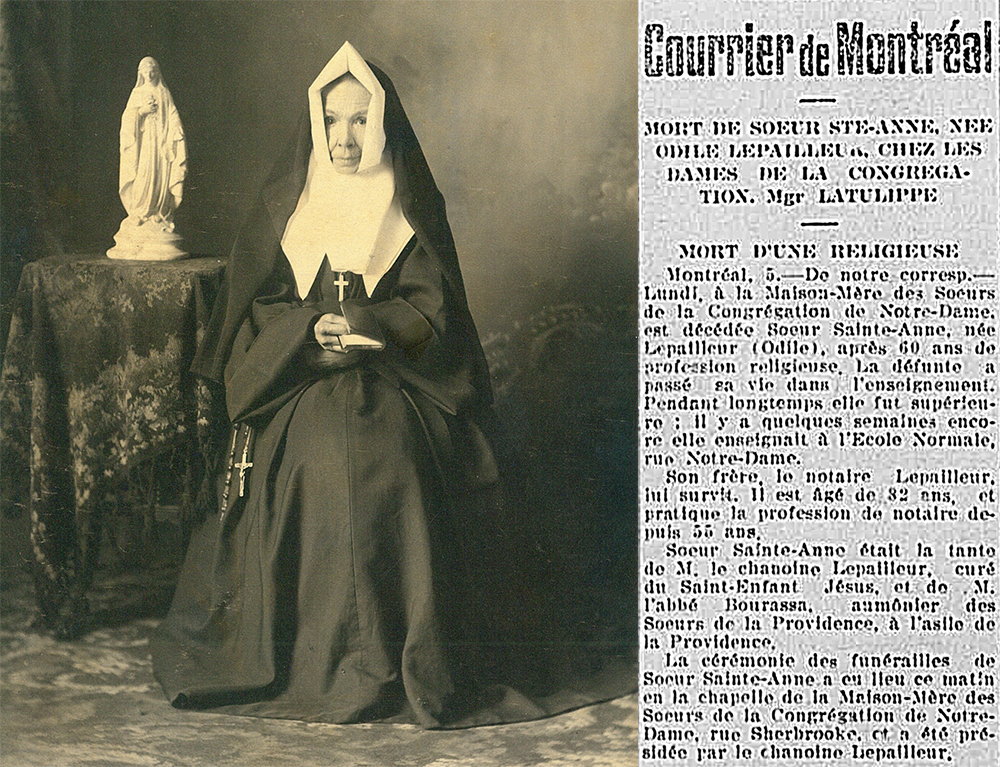Masters and students
As early as the 18th century, the LePailleur family attended school
As members of the French-Canadian bourgeoisie, many generations of LePailleurs were fortunate to have a good education, especially the men, giving them access to practise as notaries, doctors and businessmen. They were able to play a role in the development of their community.
The LePailleur boys studied at several schools in Montréal and elsewhere. The family most often chose to attend Collège de Montréal. After attending this school, some went on to work as apprentices, while others continued their studies.

Front and back of a postcard that Alfred LePailleur sent before departing to India, where he would be bishop, before 1929.
Other institutions that the LePailleurs frequented include the Department of Theology of the Grand Séminaire de Montréal, the Scholasticate of the Oblates in Ottawa, the Faculty of Medicine of McGill University and the law and theology faculties of Université de Montréal, Collège de Saint-Laurent and even Gregorian University (Rome).
But the LePailleurs didn’t simply go to school, many men in the family decided to share their knowledge with future generations. As a newly ordained young priest, Bishop Georges-Marie LePailleur taught English at the Collège de Montréal. Father Adrien LePailleur taught Greek and Latin at University of Ottawa. Composer Auguste Descarries chose Université de Montréal to teach his true passion, music history.
Other relatives invested in education in a completely different way. François-Georges LePailleur was syndic for the schools of Châteauguay and trained three young clerks in the notarial profession. His son-in-law Louis Bourassa was a school commissioner.
And the ladies? It is difficult to find information on the education of women at that time, as it was much less known. We do know, however, that Célina-Elmire, daughter of notary Alfred-Narcisse LePailleur, studied piano with Victoria Cartier, a renowned pianist and organist in the late 19th and early 20th centuries. Her youngest sister, Marie Philomène, of the Community of the Sisters of Providence, taught piano and singing, while Odile and her niece Hélène both joined the Sisters of the Congregation of Notre-Dame, whose mission was teaching. These women have also helped shape future generations.




